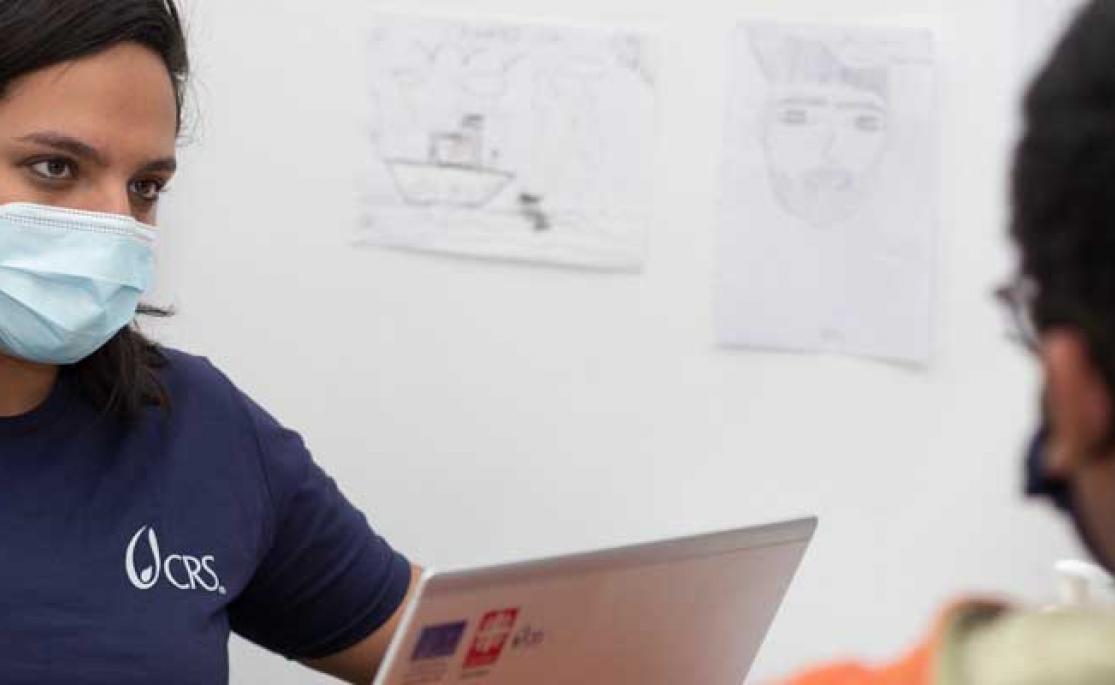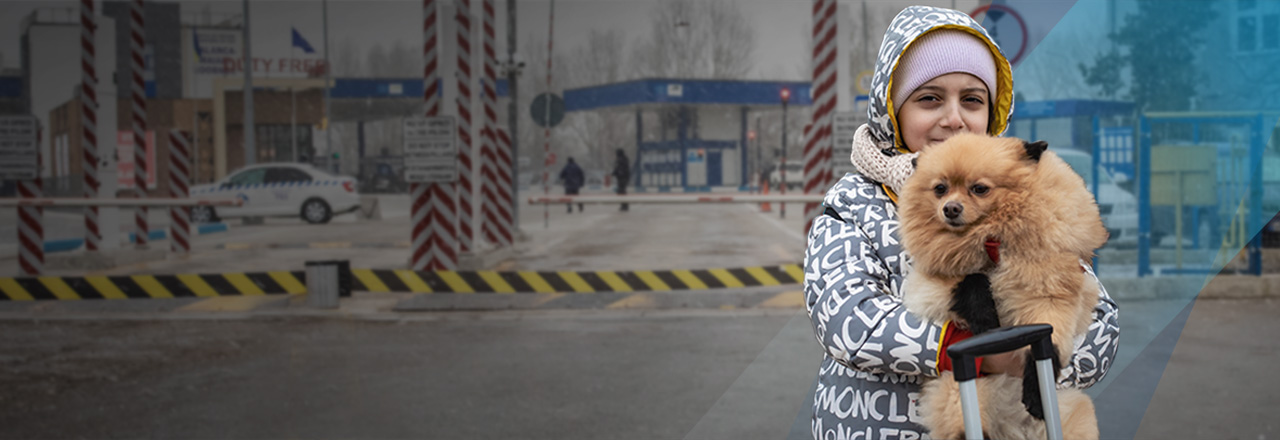
World Refugee Day
WHY THIS MATTERS
8 Things to Know for World Refugee Day
- When is World Refugee Day?
- What is a refugee?
- How many refugees are in the world?
- How many children are refugees?
- What challenges do refugees face?
- How can I help refugees?
- What are the most pressing refugee crises right now?
- Prayer for refugees
When is World Refugee Day?
World Refugee Day is celebrated every year on June 20.
We celebrate World Refugee Day to recognize our sisters and brothers who have been displaced by crisis and to pledge our support for their safe refuge, relief and recovery.
Our faith teaches us that every person is created in God’s image and that we must treat all people with dignity and respect. Catholic social teaching reminds us of God's preferential option for people who are poor and vulnerable. And Scripture repeatedly says to welcome and care for the foreigner and others who are especially vulnerable.
As our displaced global family members seek safety and opportunities, let us take action to support them and to address the issues that contribute to this global humanitarian crisis.
What is a refugee?
A refugee is a person who has been forced to flee his or her country because of a well-founded fear of persecution, conflict or violence.
Internally Displaced Persons are people who have not crossed an international border but have moved to a different region within their own country to escape life-threatening issues like conflict and natural disasters. They often have fewer rights than refugees and might live in areas of heightened risks.
According to the United Nations, every minute 20 people leave everything behind to escape war, persecution or terror. An increasing number of people have been displaced by climate change, disasters, population growth, economic inequality and conflict.
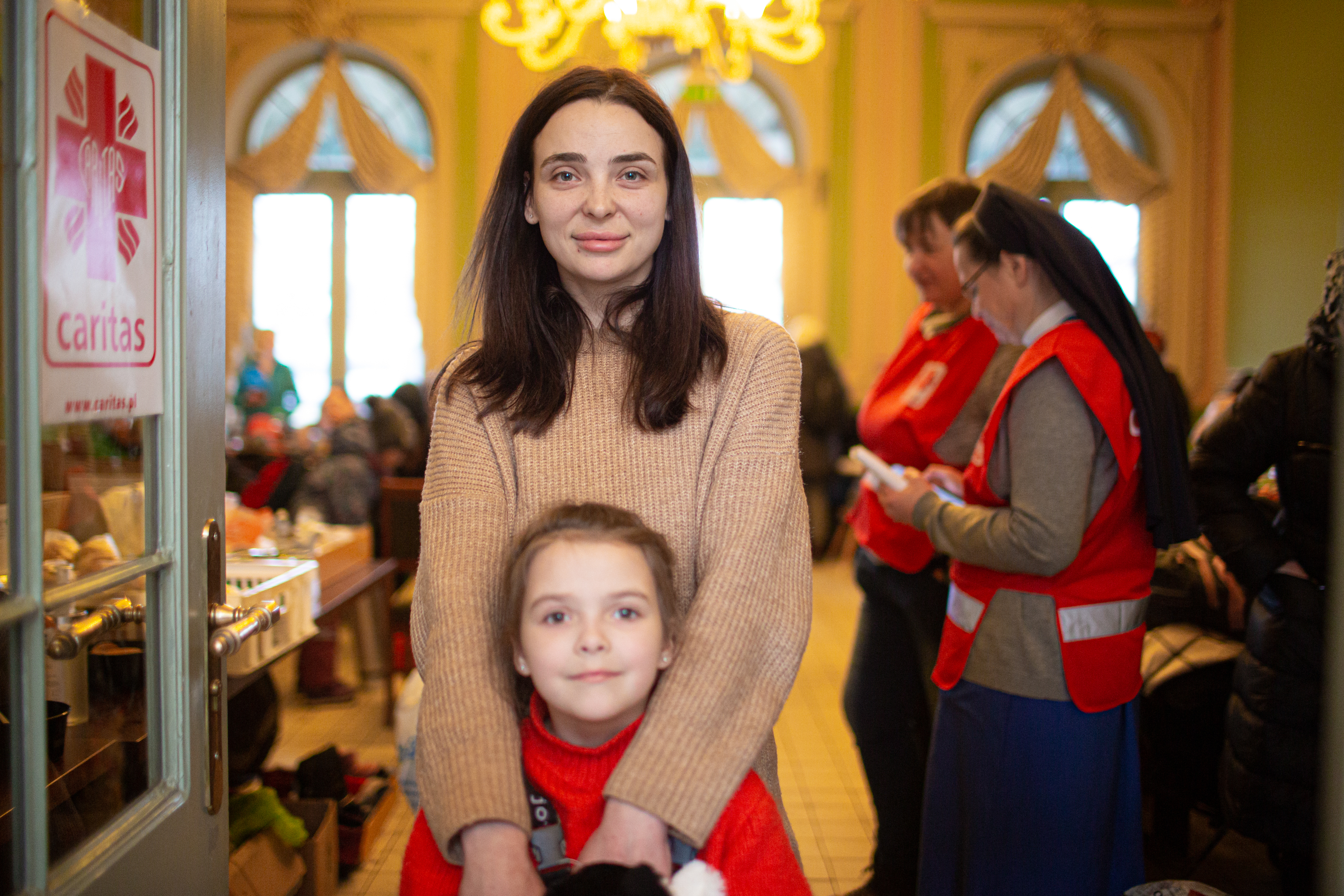
Lili and her 6-year-old daughter Ilyana fled their home in Kiev when the war in Ukraine began. They waited for eight hours at the Ukraine-Poland border in sub-zero temperatures before being able to cross and find safety at a Caritas center. Photo courtesy of Philipp Spalek/Caritas Germany
How many Refugees are in the world?
As of mid-2022, there are more than 32 million refugees worldwide, including 5.4 million people from Ukraine.
Worldwide, 103 million people have been forcibly displaced from their homes. More than 30,000 people are displaced every day.
How many Children are Refugees?
Nearly 14 million girls and boys under the age of 18 are refugees, accounting for more than 40% of the refugee population. For every three children who live outside their countries of birth, one is a child refugee. And conflict, extreme weather and other crises are displacing more children each year.
Children who are refugees often experience significant stress and trauma that can impact their physical, emotional and cognitive development. Before and during their displacement, they may witness or experience violence, lack of food, water, shelter and medical care, physical injuries or illness, and disruption in their education.
WHAT CHALLENGES DO REFUGEES AND DISPLACED FAMILIES FACE?
Losing a home can fracture a family and impact economic and emotional well-being. It can also precipitate other life-altering challenges: separating people from their loved ones and support network, limiting access to food, water, health and social services, and impacting education and livelihood options.
Fleeing one’s home or country often entails a difficult, dangerous journey. People who are displaced must navigate where to go for help and whom to trust. They have to make decisions under duress that can change the trajectory of their lives. Taking only what they can carry, people who might have led successful careers back home now depend on the hospitality of others and the support of the host community and humanitarian agencies to meet basic needs.
Hunger and climate change are some of the biggest challenges facing refugees today. Increasing food insecurity resulting from supply chain disruptions, drought, inflation and conflict threatens vulnerable communities around the world, especially refugees. According to the UN Refugee Agency, 67% of refugees and asylum seekers originate from countries with food crises.
Refugees are living on the frontline of the climate crisis. Persistent drought and flooding and rising sea levels make land uninhabitable and displace entire communities. The World Bank predicts that climate change could displace more than 200 million people by 2050. People who have fled their homeland are already vulnerable to hunger, poverty, violence and other threats, and climate change exacerbates these existing vulnerabilities.
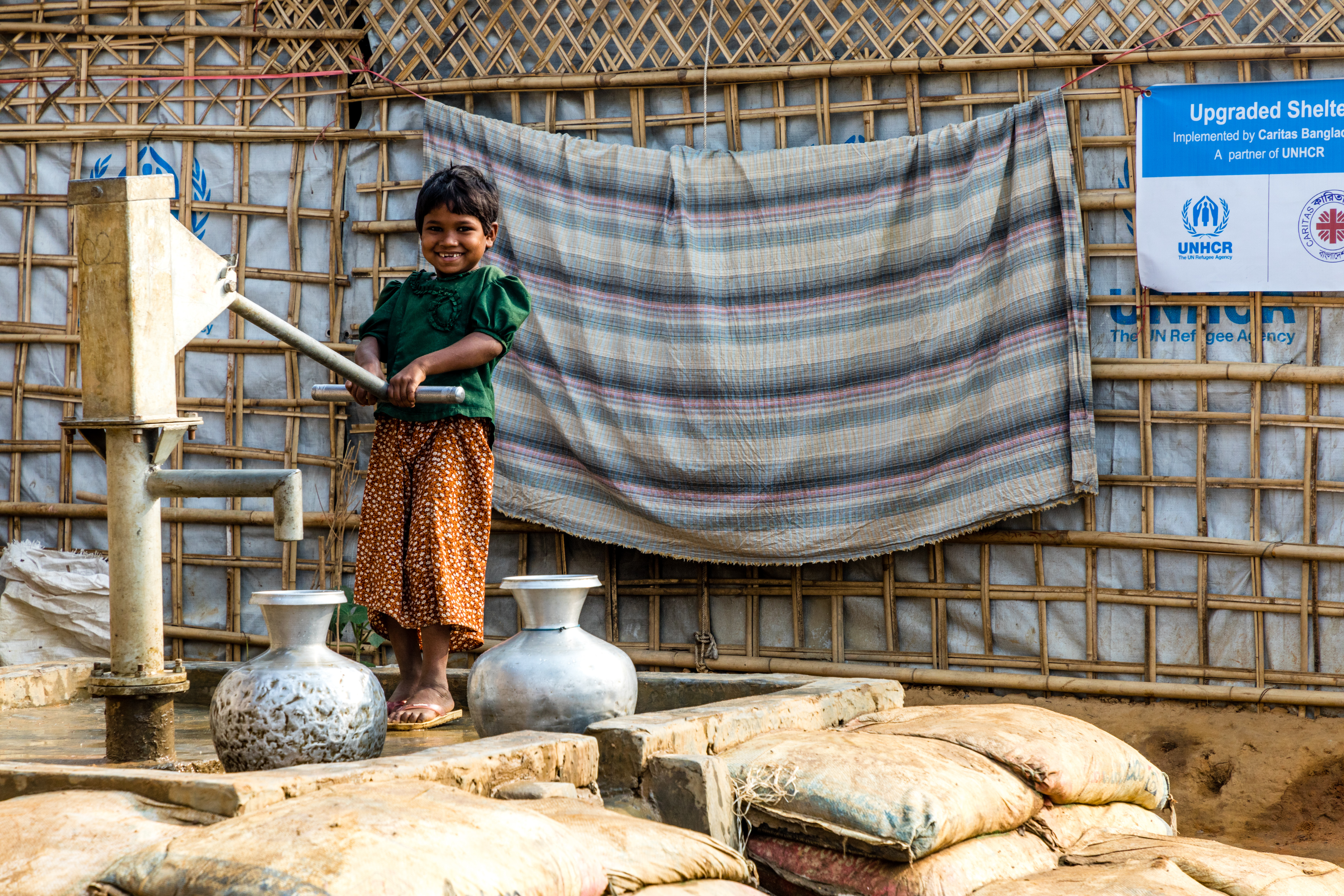
A young girl pumps water outside her home in a settlement for Rohingya refugees displaced in Bangladesh. Photo by Christopher Reichert/CRS
How to Help Refugees
GIVE
Your gift enables CRS to help refugees and other displaced people with basic necessities like clean water, medical assistance, shelter and food—especially critical now as the global hunger crisis worsens. We also work with partners to provide education, counseling and job support so that families can heal and thrive. Give today to continue making this lifesaving work possible.
ADVOCATE
Your voice is an important tool for supporting our displaced global family members. Email your members of Congress to advocate assistance for refugees and to address the root causes of forced displacement.
WHAT ARE SOME OF THE MOST PRESSING REFUGEE CRISES RIGHT NOW?
Visit CRS' Press Room to learn about current refugee emergencies and how CRS is responding to the needs of displaced communities in places like Somalia, West Africa’s Sahel region and Central America.
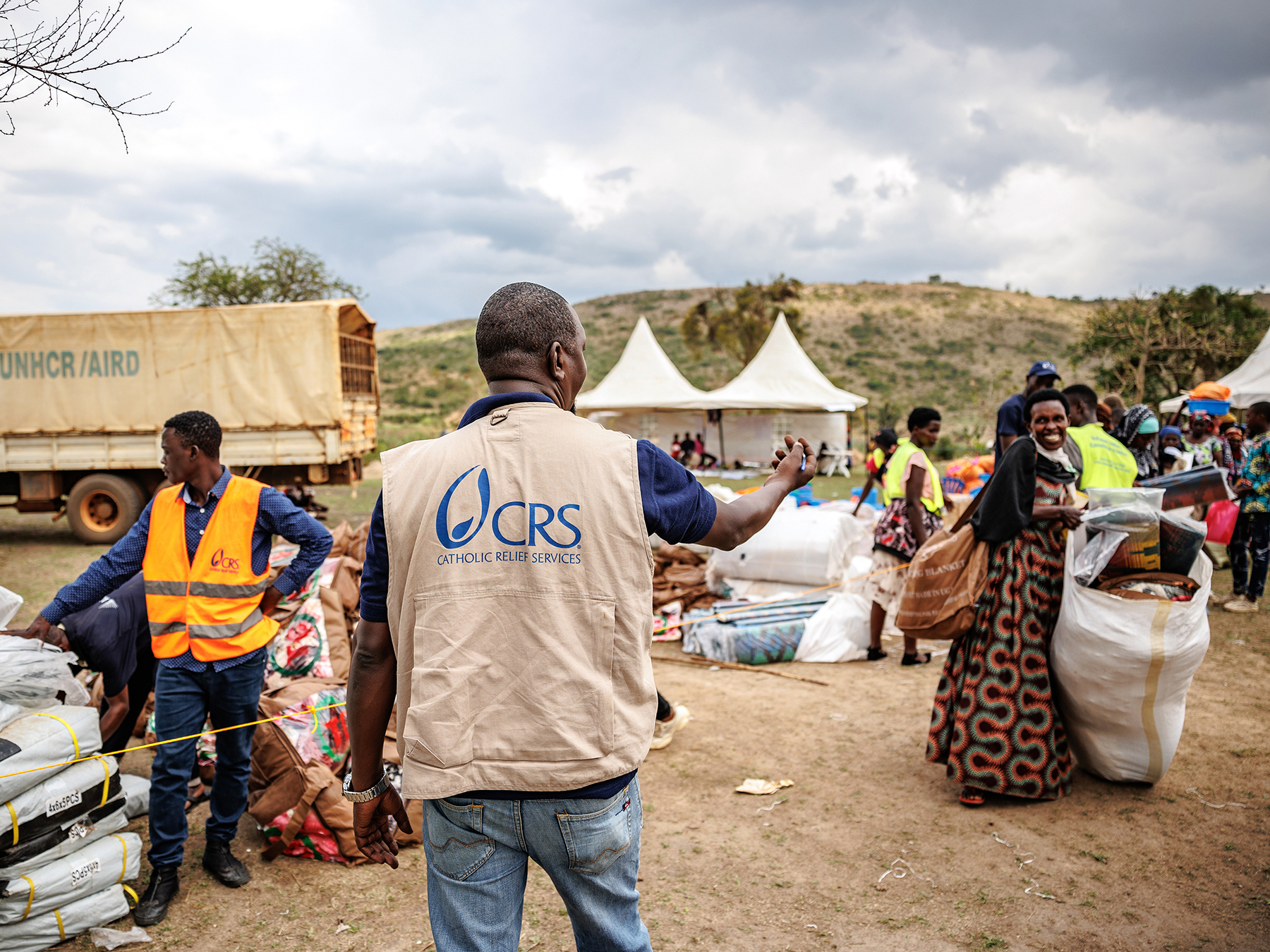 |
Sudanese Refugee Crisis in ChadAs fighting continues across parts of Sudan, a growing humanitarian crisis is developing in eastern Chad as tens of thousands of refugees seek safety from the violence. |
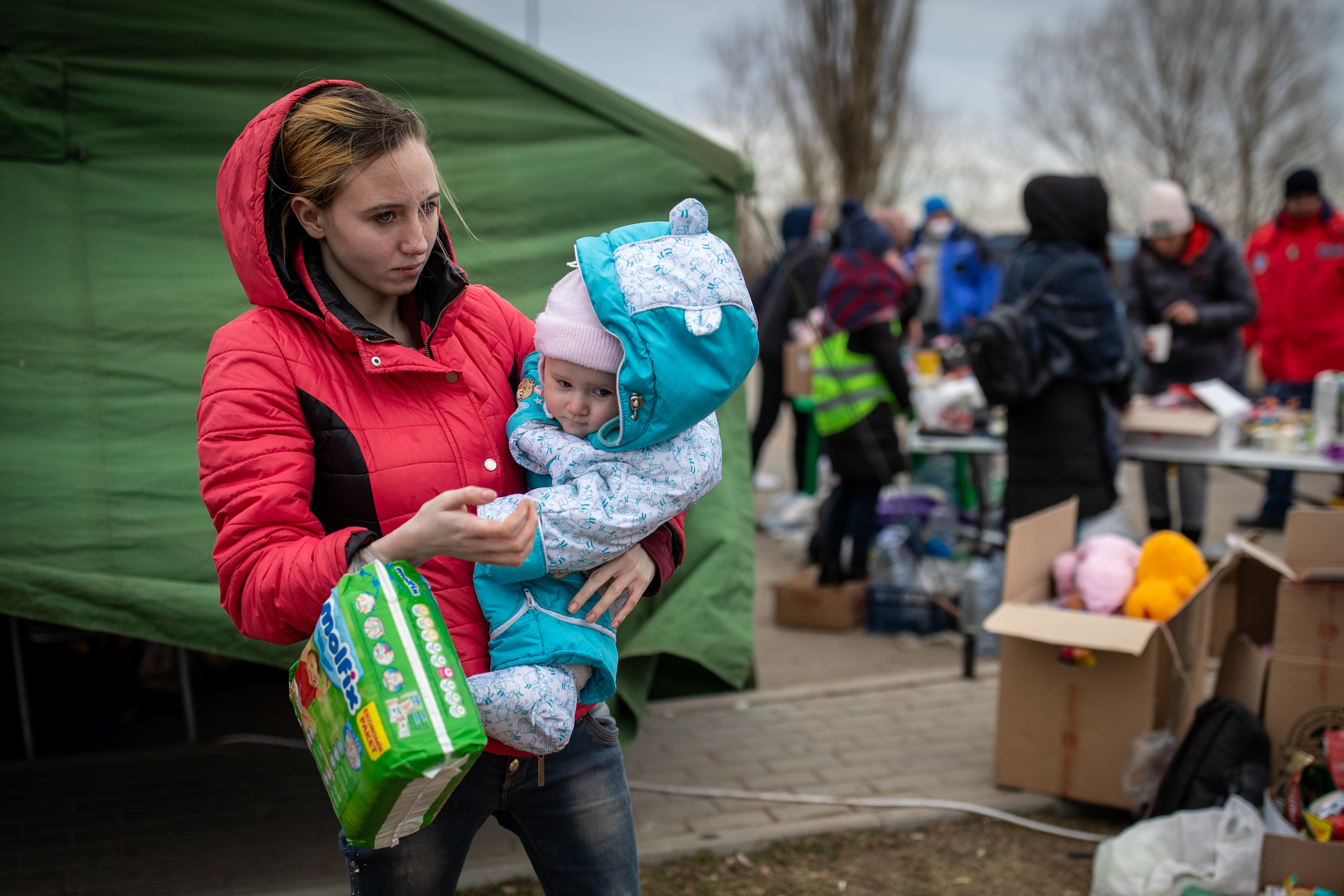 |
Conflict in UkraineSince the Russian invasion of Ukraine in February 2022, more than 7 million people have fled to neighboring countries, while 6.3 million remain displaced within Ukraine. |
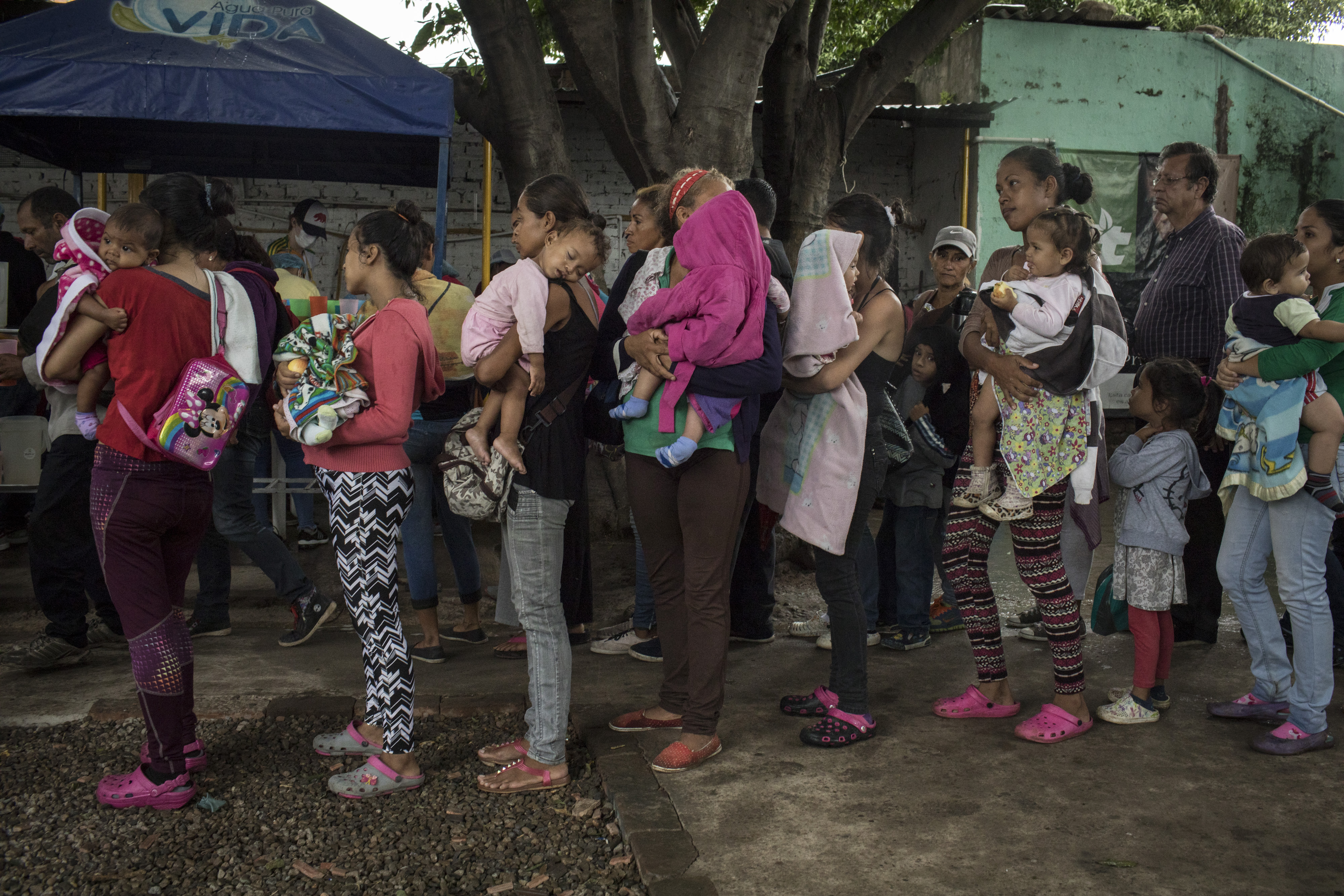 |
Venezuela: The Largest Crisis in Latin AmericaSince 2015, Venezuela has been facing an economic and social crisis, causing more than 5 million people to flee the country. |
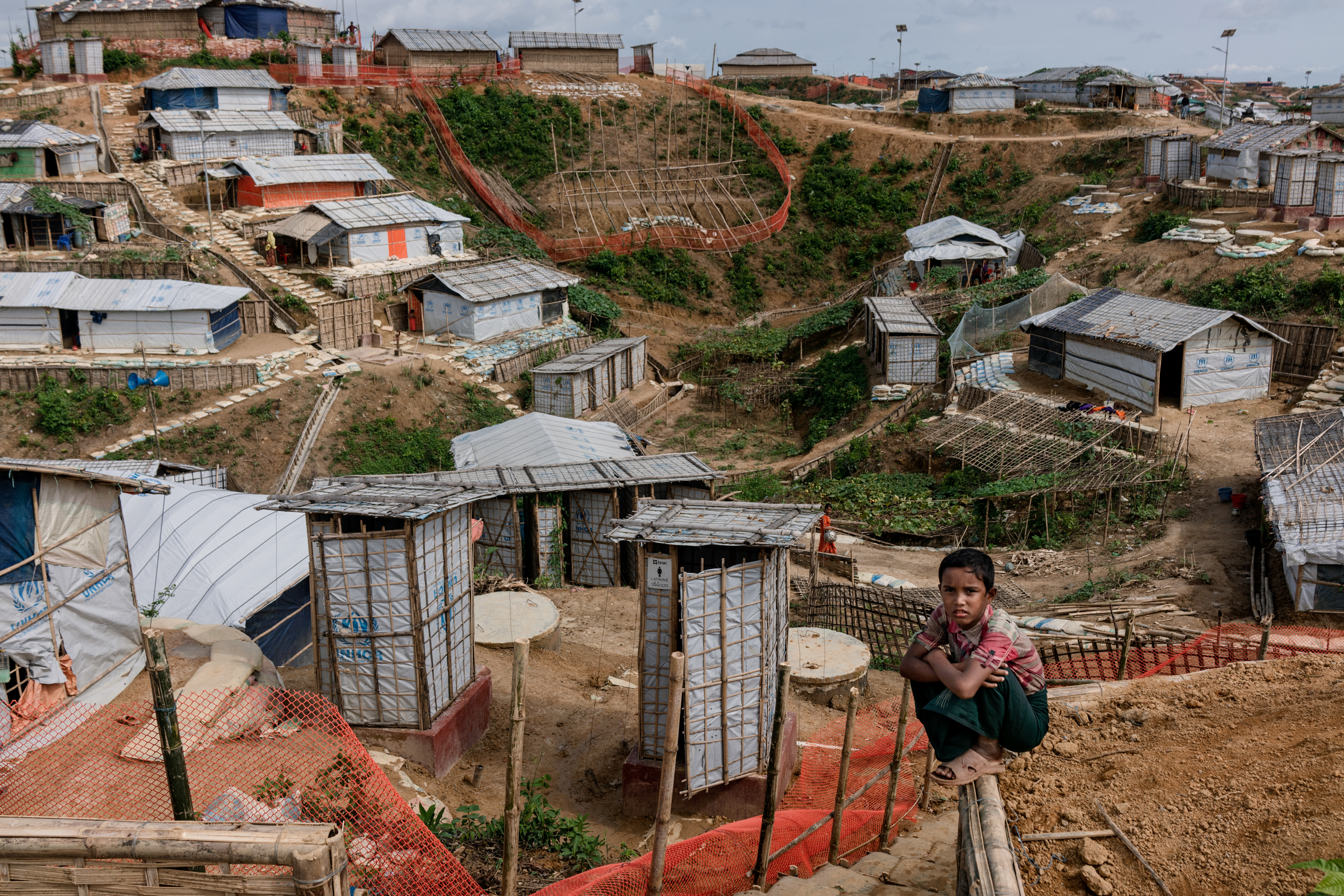 |
Rohingya Refugees in BangladeshMore than 1 million Rohingya refugees have fled to Bangladesh and are beginning to adapt to their new lives despite challenges like climate change. |
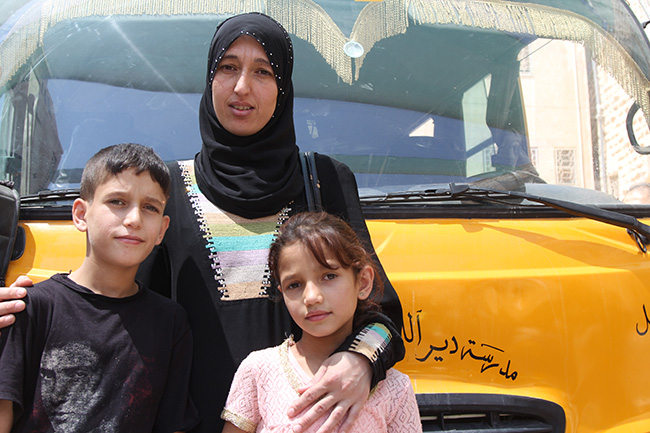 |
Syrian Refugee CrisisEven as many Syrian refugees have returned to their country, millions more remain in neighboring countries due to continued fighting and instability. |
“The human tragedy that is forced migration is a global phenomenon today. This crisis which can be measured in numbers and statistics, we want instead to measure with names, stories, families.”
—Pope Francis
Prayer for Refugees
Almighty God,
Millions of our sisters and brothers are on the move around the world,
Not by choice, but by desperation.
For those forced to flee violence,
We pray they find safety.
For those seeking economic opportunity,
We pray they find secure livelihoods.
For those trying to support and protect their families,
We pray they find communities to embrace them.
For those searching for peace and hope,
We pray that we may be bearers of the Good News.
We are called to be prophetic advocates in this world.
To call out injustice and be heralds of Truth and Love.
We pray that all migrants, refugees and displaced persons
May find safe and loving communities
And the opportunity to thrive.
And we pray that we may have the courage to stand and act
In defense of human dignity for all our sisters and brothers in need.
Amen.
